Elite Tuo smart trainer review - hands down the prettiest wheel-on trainer we’ve tested
Elite’s Tuo combines form as well as function, with a wooden finish and a smooth ride feel. It’s more expensive than its competition, but it is often on a discount
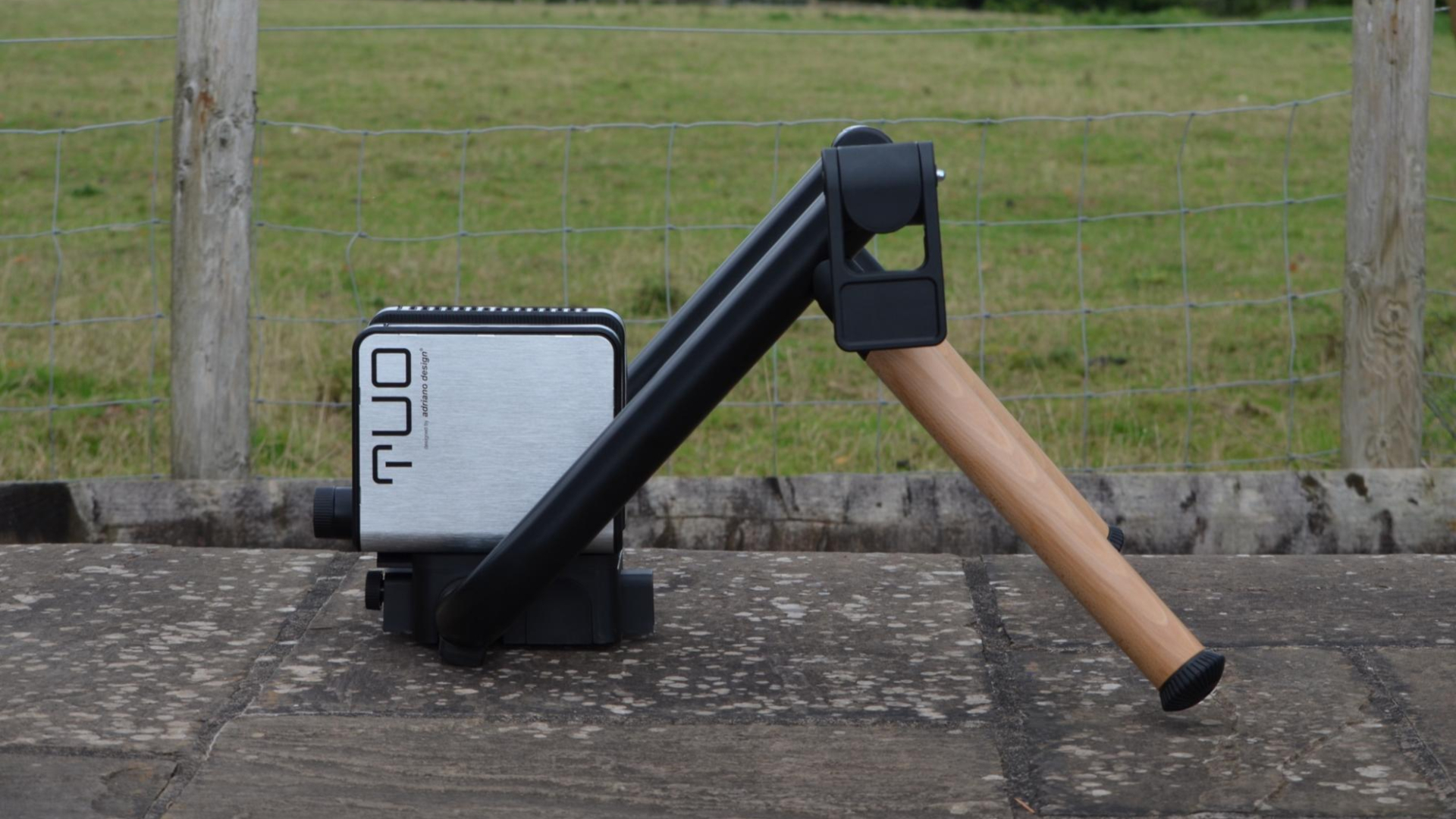
The Elite Tuo is an attractive looking wheel-on smart trainer which offers surprisingly accurate power measurements for a trainer of this design (i.e. not a direct drive model). It presents a great entry into the smart-trainer market when on a discount, but the trainer does have some limitations in that the power readings when sprinting aren’t very accurate nor are the cadence measurements when putting in varied efforts.
-
+
Pros – looks smart
-
+
Power reads very accurately for a wheel-on smart trainer
-
+
ERG mode feels smooth and responsive
-
+
Feels stable when doing higher power efforts
- +
-
-
Sprint power is not particularly accurate
-
-
Need a flat surface
-
-
Cadence did not respond well to changes of pace
You can trust Cycling Weekly.

Editor’s note: There is a new Elite Tuo available, the FE-C Mag, which ups the wattage max to 2050 watts and maximum speed of 60 kph as well as improved accuracy going up to +/-3 per cent, in line with the Wahoo Kickr Snap. However it is not available on sale and is up to £475 now.
Founded 40 years ago by Amerigo Sartore, Elite and has been producing cutting edge cycling products ever since. The Italian brand is perhaps best known for their bottle cages and bottles, which are used by a large percentage of the professional peloton.
Elite also has a strong arm in rollers and turbo trainers, with some of the best smart turbo trainers being their latest in a line of innovations. The Tuo slots into the range as an upmarket wheel-on model - aiming to deliver better performance than entry-level models, as well as a better aesthetic. So, how does the Elite Tuo compare to the best cheap smart trainers?
Elite Tuo smart trainer: construction
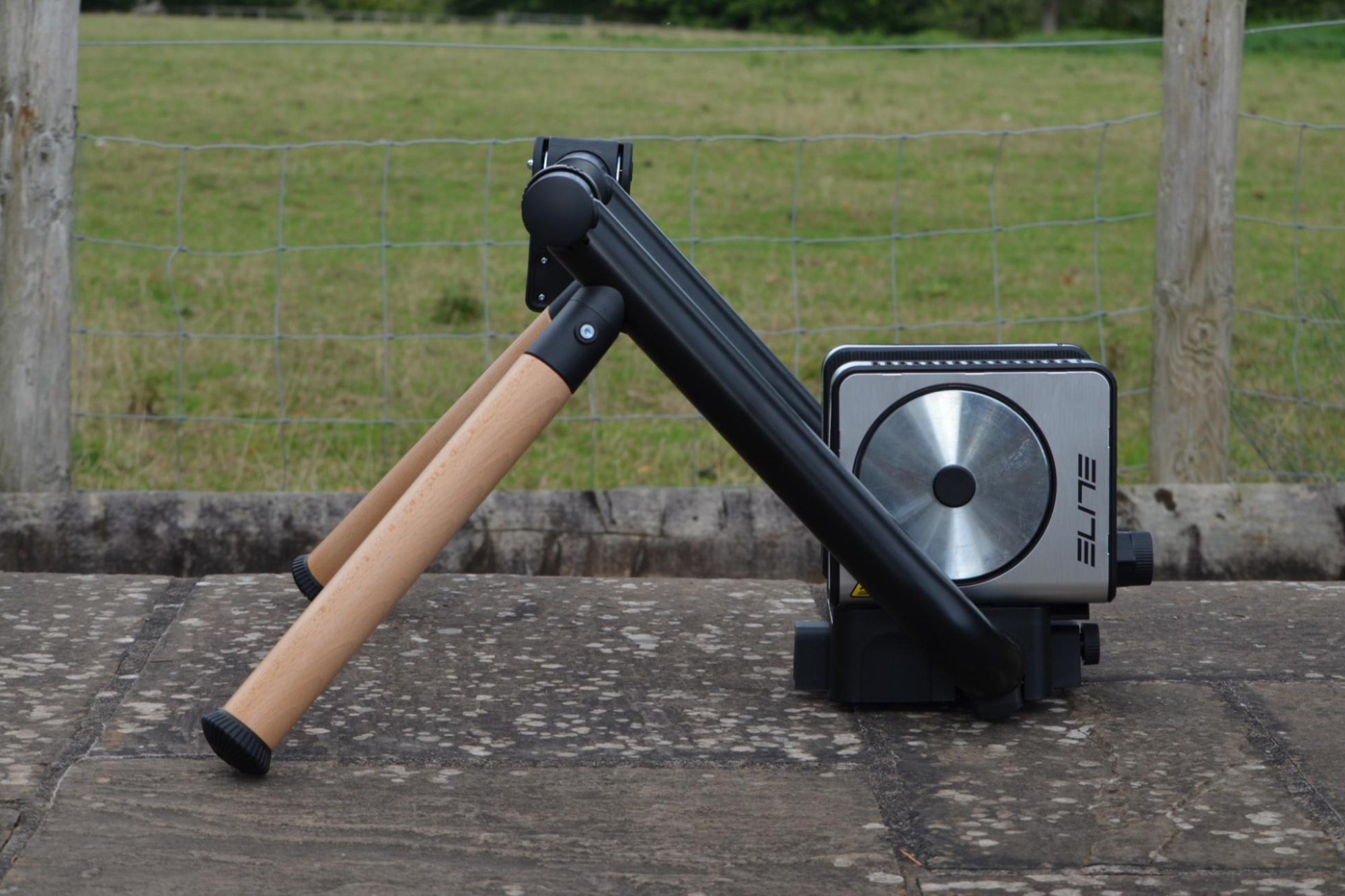
The Tuo is quite light for a smart turbo, at just 10.3kg, and with the wooden legs it looks a little more at home in many living rooms than more plasticy models. It broadcasts data using both ANT+ and BLE, allowing you to connect to most bike computers and the best indoor training apps such as Zwift, TrainerRoad and Wahoo SYSTM. Thru axle converters are included, as well as a comprehensive guide on how to set up your bike and get the elastomer in correct contact with the rear wheel.
Power accuracy is a claimed +/-5 per cent - which is good for a wheel on but lags behind the Wahoo Kickr Snap and most direct drive trainers. Simulated gradient is +/-10 per cent which is good for this style of trainer, but not exceptional. The 1,300 watts max resistance is more than enough for most people, but if you are a particularly gifted sprinter then a direct drive is likely your only option.
A nice feature is that the trainer folds up very small, so if you live in a smaller building and have to put away the trainer after each use, this is nice and easy. Plus the light weight makes it easier to move around.
Elite Tuo smart trainer: the ride
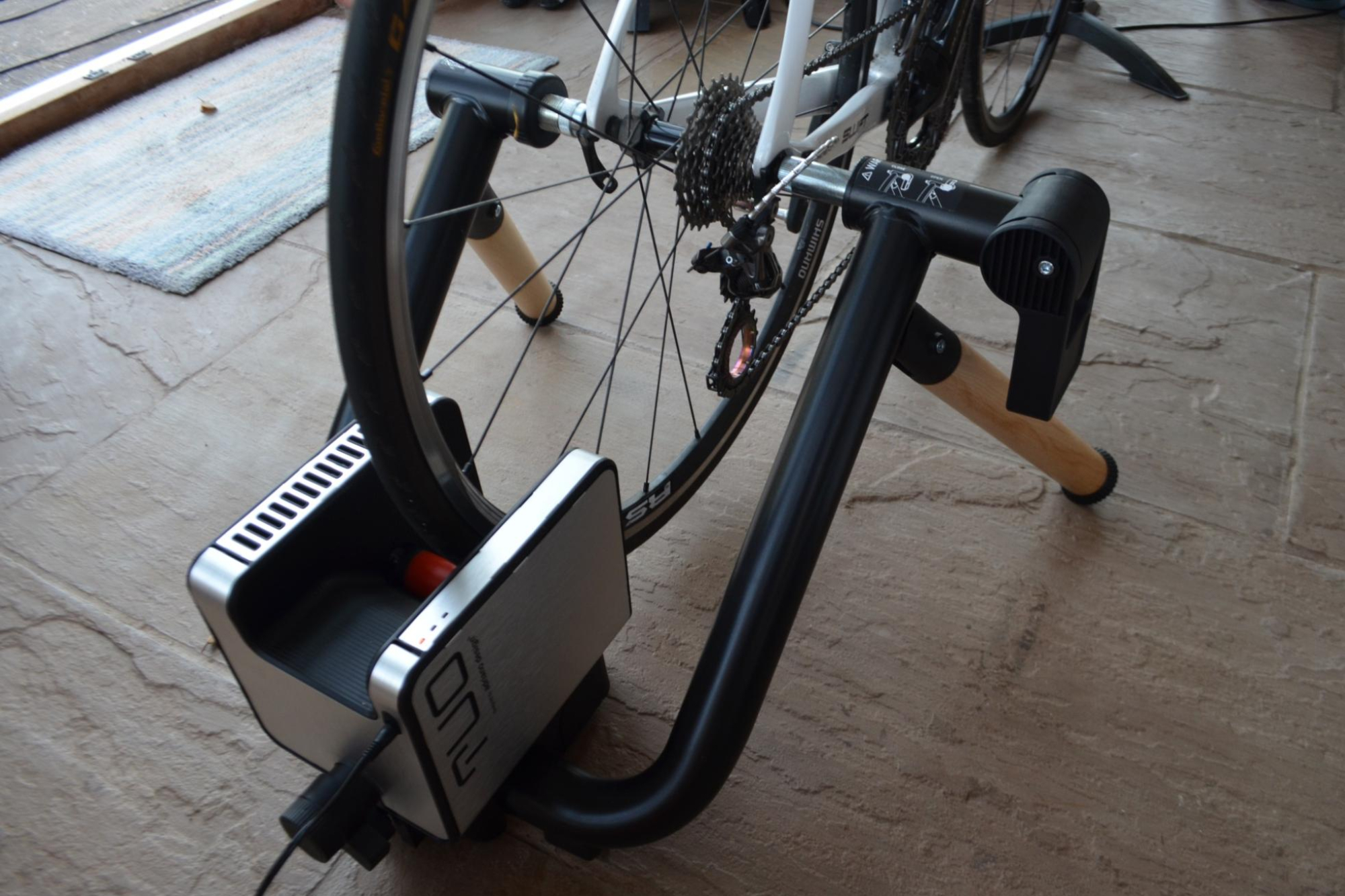
I had a few issues on the first attempt at getting everything set up, but a quick email to the manufacturer and some online tutorials on their website helped a lot. Using the Elite apps (myEtraining and Upgrado) I was able to connect and calibrate the trainer properly, as well as updating the firmware to the latest version. After this, calibration was easy and I linked the trainer to the Stages Dash M200, and the power meter I was using to compare (4iiii Precision 3.0) connected to a Wahoo Elemnt Bolt V2.
The latest race content, interviews, features, reviews and expert buying guides, direct to your inbox!
Setting the bike up on the trainer was easy too. Simply set the bike up with the right pressure applied on the locking handle (bike should be locked in when the handle is at 55-65 degrees, then you lock fully to 90 degrees) with no additional skewer required. It was then a case of spinning the wheel and micro-adjusting the roller so it just comes into contact with the tyre without locking. Then, once the tyre is in contact, lock the system.
The feet are stable enough for most efforts, but you need to ensure you are on a flat surface. I was on a stone floor with some variability in its smoothness, so the trainer was not flat and rocked a little bit. A few shims sorted this out, but it took a while to fine tune exactly.
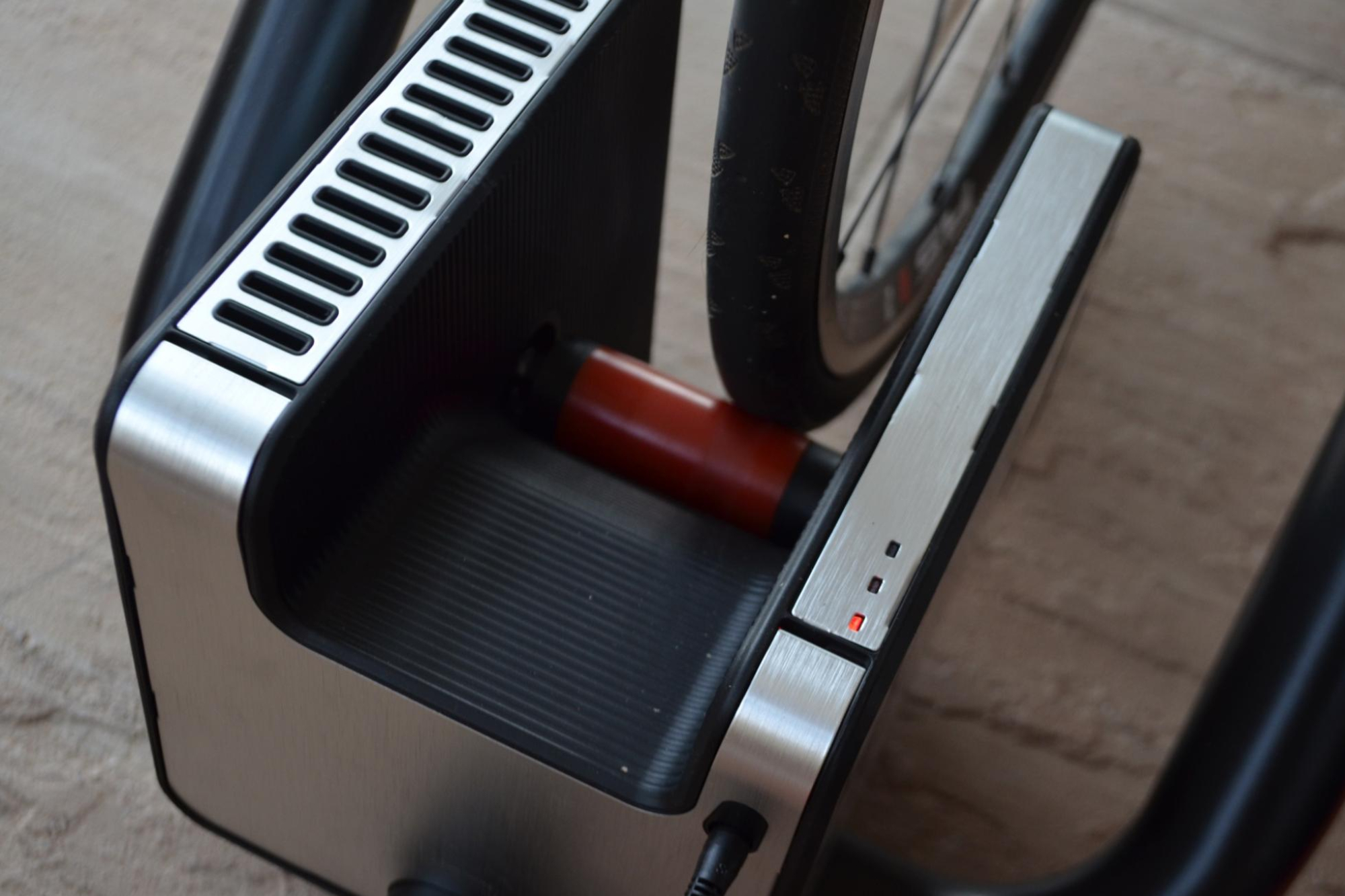
The ride on the Tuo is very smooth and the roller offers no slip or jumps regardless of power or cycling cadence. I did some big gear sprints, little gear sprints, big gear efforts and very high RPM ones. Nothing made the rollers slip at any point. Power also seemed to track really well, with the 4iiii at steady levels. Although, upon later analysis, the Tuo did perform some smoothing rather than giving an instant measurement. Cadence also tracked well. ERG mode was very responsive and worked very well when moving up power levels progressively.
Where things got a little tricky was during higher power efforts and also when easing off the power. Firstly, cadence. When accelerating for an effort with a few six seconds hard, 14 seconds easy, the 4iiii measured the RPM correctly whilst the Tuo jumped up to sometimes over 200 RPM. Then, when easing off from the effort, the Tuo RPM jumped again.

As for power, on screen this didn’t show the same as with the 4iiii and there appeared to be a significant lag with the Tuo, but upon analysis this was not an issue in the file. What was a problem was the power tracking, which was occasionally quite far off for sprint efforts and anything closer to maximal.
When putting out lower powers, the Tuo actually read higher than the 4iiii. It also read higher for 15 second power. But for 1 minute and 30 second power the Tuo did read lower, but only by 3 per cent or so, fitting in line with the claimed accuracy of the Tuo. The significant and notable difference was in the 5 and 1 sec power, with a 22 and 32 per cent difference respectively in favour of the 4iiii. So for tracking sprint power the Tuo does not seem as accurate.
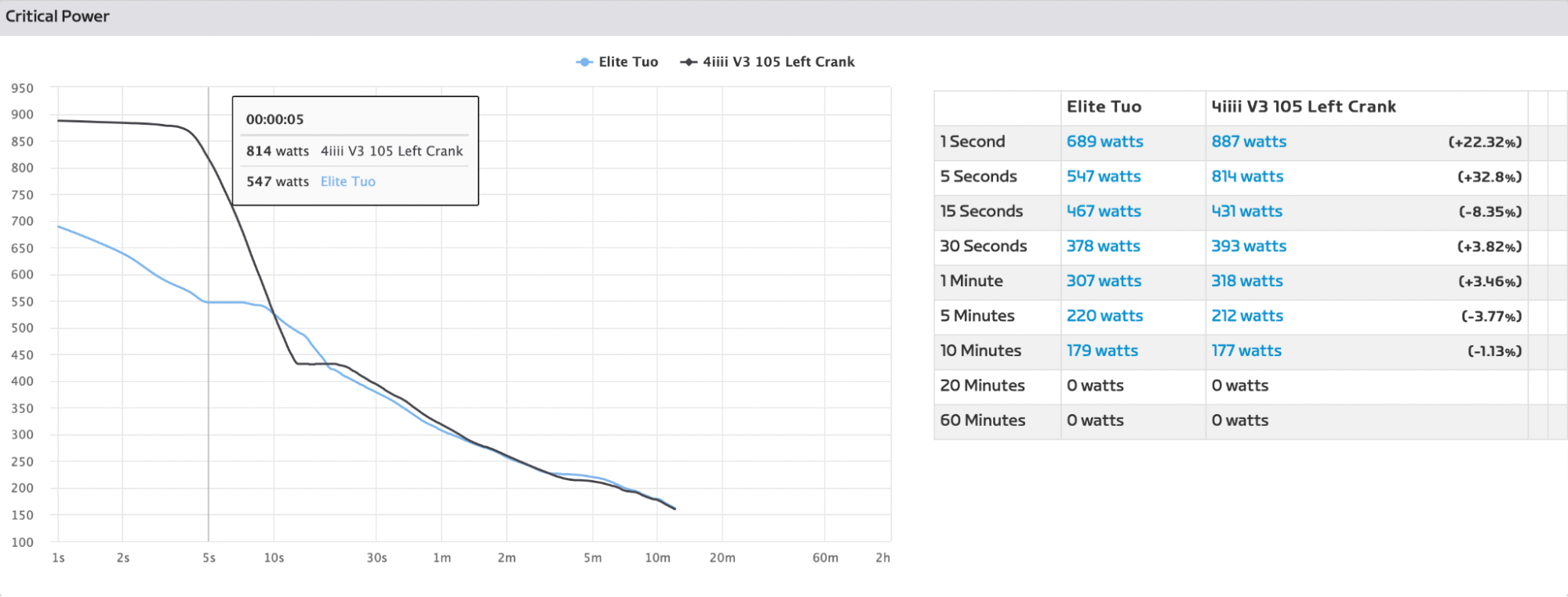
Another issue was that when not using the ERG mode - even using a 53/11 gearing - I was having to pedal at 122 RPM to sustain around 400 watts. For larger or more powerful riders, this is a power level that can be sustained for fairly long periods of time, so would present a problem for those who prefer to spin a lower cadence. At least the ERG mode is an option, though.
When connected to a system such as RGT or Zwift, though, the ERG and resistance work pretty well and react quite quickly with a change of pace. This is certainly the best wheel on smart trainer I’ve ever used, and I was pleasantly surprised by how well the power correlated with the 4iiii for everything except higher power sprint efforts.
Elite Tuo smart trainer: value
The retail value of the trainer is towards the higher end of pricing for comparable units ($580 / £445 compared to $500 / £429 for the Wahoo Kickr Snap and $370 / £299 for the Tacx Flow smart) although is available for far less on many good online retailers ($348 on REI and £320 on Sigma Sports).
I’d say the Kickr Snap is more comparable with the Elite Tuo than the Tacx Flow smart. Both are available at a similar price, but the Kickr claims to be +/-3 per cent for accuracy compared to the Tuo’s +/-5 per cent. However the Tuo is a lot lighter and still very stable, so very good for moving in and out of storage.
At the retail price, I’d say it’s too close to some of the cheaper direct drive trainers, such as Zwift’s Hub ( a new, untested direct drive trainer for $499 / £449). However, at the sale prices that it is readily available at, it does offer an enticing entry into the smart trainer market.
Elite Tuo smart trainer: conclusion
The Tuo offers almost the same amount of ease and practicality that rollers do, no need to do anything to the bike other than lock it in and ride - and is much more attractive than other wheel-on turbo trainers. It reads power very accurately at steady power levels and across a wide range of powers.
Where it is let down is when performing sprint efforts or varying intensity efforts such as 20/40s. At full price, the Tuo is too close to the direct drive trainer market - really you’d be best off saving up just a tiny bit more and getting one of those.
That said, the Tuo is readily available on a good discount, and at 25 per cent off, it does represent reasonable value for money. It’s definitely not the cheapest, but the performance is good and so are its looks.
Andy is a Sport & Exercise Scientist, fully qualified and experienced Cycling Coach, Sports Director, Freelance Writer, and Performance Consultant. He spent 3 years riding for a UCI cycling team and 7 years as a BC Elite rider, competing in prestigious events such as the Tour of Britain and the Volta a Portugal.
Graduating with a first-class honours degree in Sport & Exercise Sciences, he continues to pursue his interest in research in the field of Sport Science alongside managing his coaching business, ATP Performance. He also works as a Wind Tunnel operator and Performance Consultant at the Silverstone Sports Engineering Hub, working with individuals, teams, and businesses to optimise performance and develop products.
